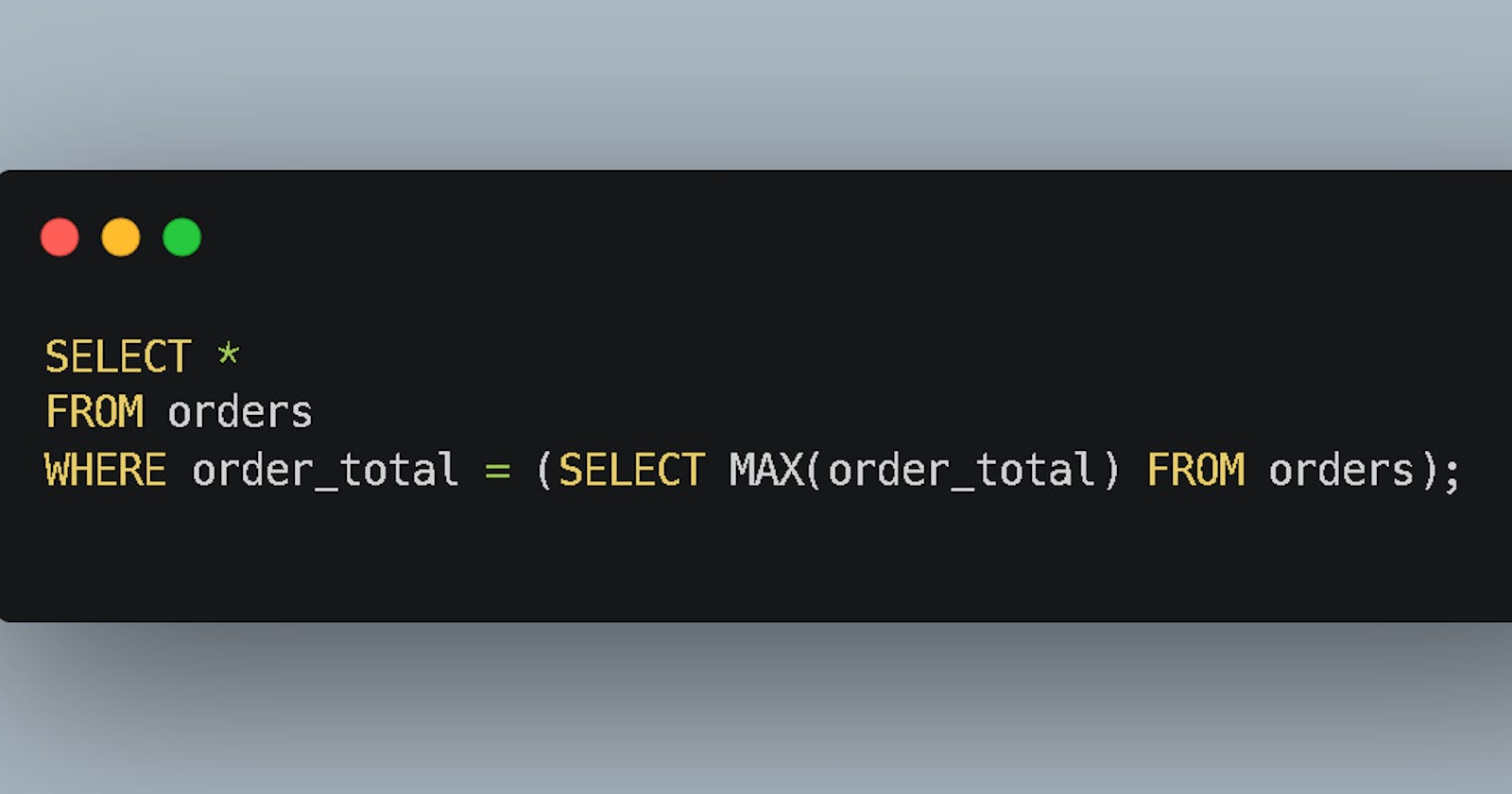A subquery is a SELECT statement that is nested within another SELECT, INSERT, UPDATE, or DELETE statement, or within a SET clause of a SELECT statement. Subqueries can be used to return data to the main query or to filter the results of the main query based on the results of the subquery.
Subqueries are usually used when the main query cannot be written using a simple WHERE clause, or when the main query needs to retrieve data from multiple tables.
Here is an example of a subquery used in a SELECT statement:
SELECT *
FROM orders
WHERE order_total = (SELECT MAX(order_total) FROM orders);
In this example, the subquery (the SELECT statement within the parentheses) is used to find the maximum order total from the orders table. The main query then uses the result of the subquery to filter the orders and only return the rows with the maximum order total.
Subqueries can also be used in the FROM clause of a SELECT statement, in which case they are called derived tables. Here is an example of a subquery used as a derived table:
SELECT o.order_id, c.customer_name
FROM (SELECT * FROM orders WHERE order_total > 100)
AS o JOIN customers AS c ON o.customer_id = c.customer_id;
In this example, the subquery is used to select all orders with a total greater than 100. The main query then joins this derived table with the customers table and returns the order IDs and customer names for the matching rows.
It is important to note that subqueries can only return a single value or a single row of values to the main query. If the subquery returns multiple rows, you must use a GROUP BY or HAVING clause in the subquery, or use a JOIN in the main query.
Subqueries can be very useful in optimizing the performance of your SQL queries, as they allow you to break down a complex query into smaller, more manageable pieces. However, they can also make your queries more difficult to read and maintain, so it is important to use them carefully and only when necessary.
I hope this helps to simplify the concept of SQL subqueries for you!
